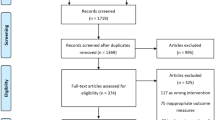Abstract
Two policies of palliative thoracic radiotherapy for non-small-cell lung cancer have been compared in a randomised multicentre controlled trial. A total of 369 patients with inoperable, histologically or cytologically confirmed disease, too advanced for radical 'curative' radiotherapy, and with their main symptoms related to the primary intrathoracic tumour even if metastases were present, were studied. They were allocated at random either to a regimen of 17 Gy given in two fractions of 8.5 Gy 1 week apart (F2 regimen), or to a conventional multifractionated regimen of either 30 Gy in ten fractions or 27 Gy in six fractions (a biologically equivalent dose), given daily except at weekends (FM regimen). On admission, 93% of the patients had cough, 47% haemoptysis, 57% chest pain, 58% anorexia, and 11% dysphagia. As assessed by the clinicians, palliation of the main symptoms was achieved in high proportions of patients ranging in the F2 group from 65% for cough to 81% for haemoptysis and in the FM group from 56% for cough to 86% for haemoptysis. Haemoptysis, chest pain, and anorexia disappeared for a time in well over half the patients with these symptoms, and cough in 37%. For all the main symptoms, the median duration of palliation was 50% or more of survival. Performance status improved in approximately half of the patients with a poor status on admission. All these results were similar in the two treatment groups. As assessed daily by the patients using a diary card, the quality of life deteriorated slightly during treatment but then improved steadily during the next 5 weeks. The proportion of patients with dysphagia increased considerably during treatment, but fell to the pretreatment level during the next 2 weeks. The results were similar in the two groups. Radiation myelopathy was suspected in one (F2) patient. There was no difference in survival between the two groups (log-rank test), the median survival time from the date of allocation being 179 days in the F2 and 177 days in the FM group. In the light of all the findings, the regimen of two fractions of 8.5 Gy given 1 week apart is recommended.
This is a preview of subscription content, access via your institution
Access options
Subscribe to this journal
Receive 24 print issues and online access
$259.00 per year
only $10.79 per issue
Buy this article
- Purchase on Springer Link
- Instant access to full article PDF
Prices may be subject to local taxes which are calculated during checkout
Similar content being viewed by others
Author information
Consortia
Additional information
Prepared on behalf of the participating members by N.M. Bleehen, D.J. Girling, P.M. Fayers, V.R. Aber & R.J. Stephens.
Rights and permissions
About this article
Cite this article
Report to the Medical Research Council by its Lung Cancer Working Party. Inoperable non-small-cell lung cancer (NSCLC): a Medical Research Council randomised trial of palliative radiotherapy with two fractions or ten fractions. Br J Cancer 63, 265–270 (1991). https://doi.org/10.1038/bjc.1991.62
Issue Date:
DOI: https://doi.org/10.1038/bjc.1991.62
This article is cited by
-
Hemostatic radiotherapy in clinically significant tumor-related bleeding: excellent palliative results in a retrospective analysis of 77 patients
Radiation Oncology (2023)
-
Palliative radiotherapy for gastric cancer bleeding: a multi-institutional retrospective study
BMC Palliative Care (2022)
-
Hemoptysis: Rethinking Management
Current Pulmonology Reports (2019)
-
Survival and prognostic factors after moderately hypofractionated palliative thoracic radiotherapy for non-small cell lung cancer
Strahlentherapie und Onkologie (2014)
-
Does high-dose radiotherapy benefit palliative lung cancer patients?
Strahlentherapie und Onkologie (2013)



